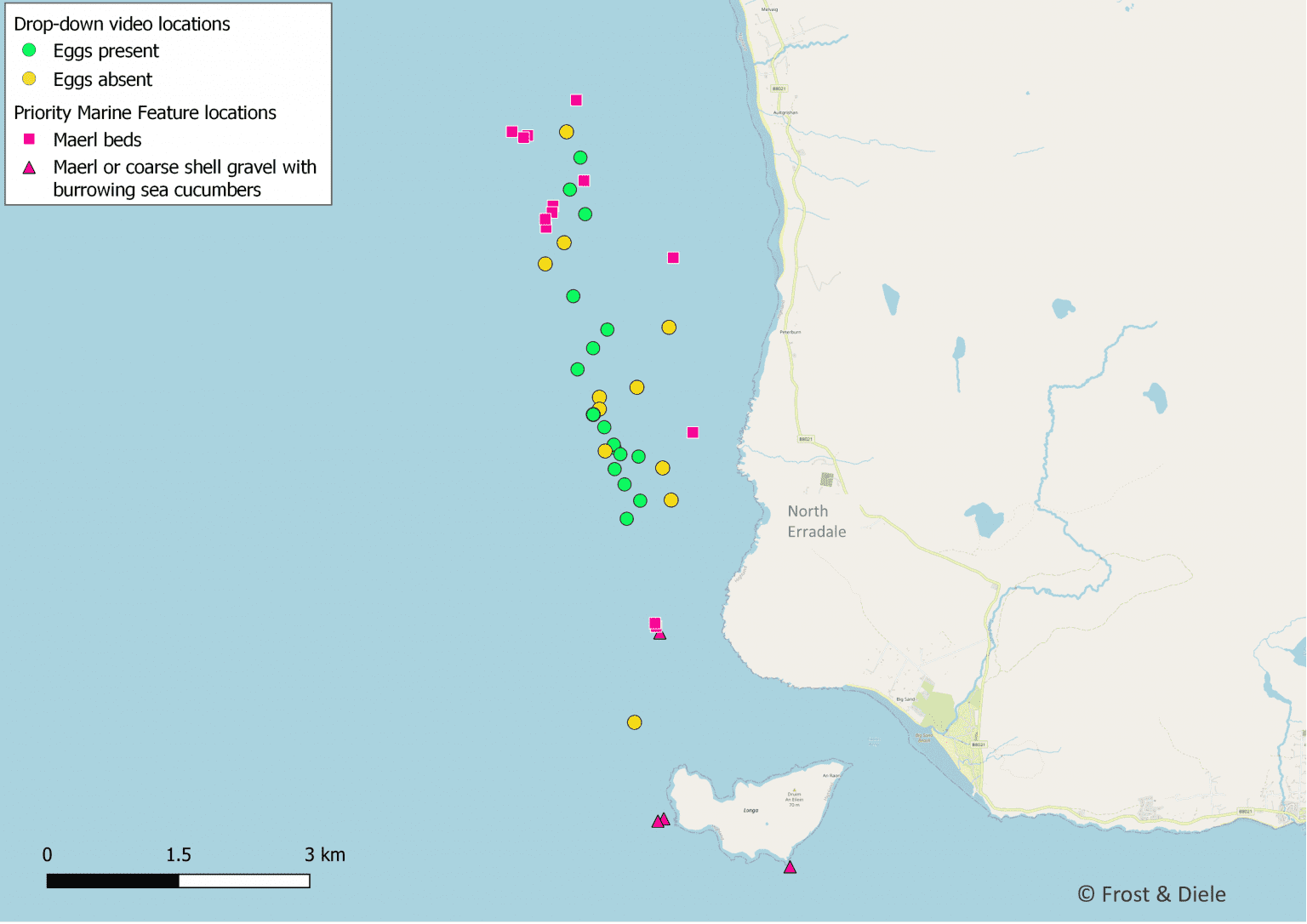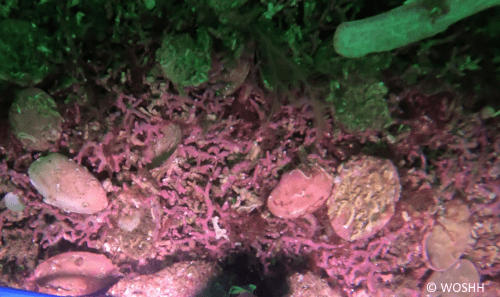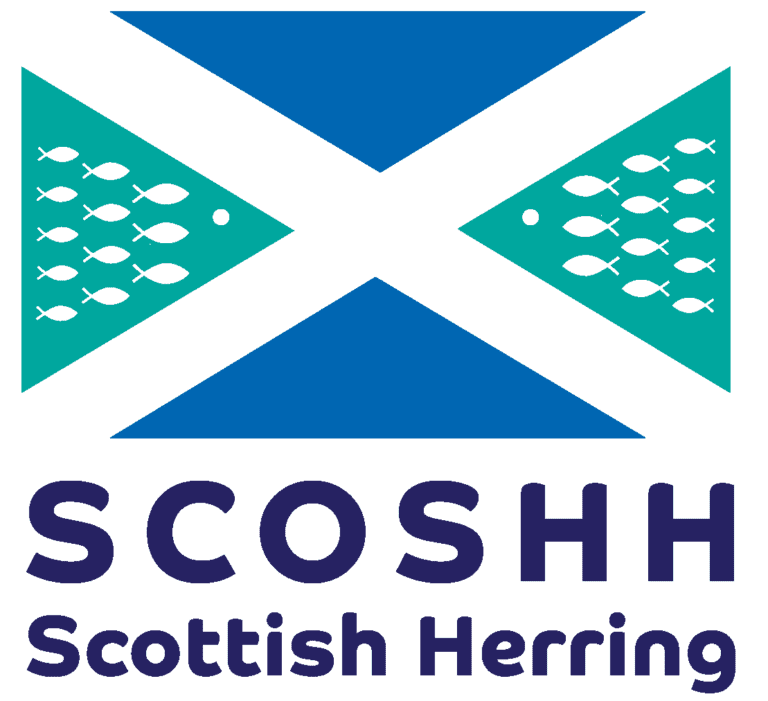2
2024 West coast herring spawning bed survey
Spawning bed survey
A West of Scotland herring spawning ground near North Erradale, Wester Ross was surveyed (see the WOSHH update here and the WRFT update here) using Drop Down Videos (DDV) cameras and a Remotely Operated Vehicle (ROV) on the 12th and 20th of March, 2024. The survey was initiated after “milky” turquoise water was seen from shore, by Peter Cunningham WRFT, as well as from space (the Copernicus Satellite; see the BBC article here). The patch, likely caused by the milt (sperm) of spring-spawning herring was 1.5-2 km from shore.
During the two spawning ground surveys, herring eggs were found in an area measuring approximately 4 km by 700 m. A total of 32 videos were recorded, including near Longa and South Erradale (not pictured), with 16 showing eggs on the seabed (see map below).

Maerl beds
 All spring-spawning herring eggs seen were on maerl with well-formed nodules (approximately 1.5-3 cm long). Herring eggs were particularly abundant on maerl ripples/megaripples and were prevalent on both live and dead maerl.
All spring-spawning herring eggs seen were on maerl with well-formed nodules (approximately 1.5-3 cm long). Herring eggs were particularly abundant on maerl ripples/megaripples and were prevalent on both live and dead maerl.
Maerl (pictured) is a nodule-forming coralline red algae, building “carpets” on the seabed, so-called maerl beds. Maerl beds are complex in structure, functionally important, and provide habitat for many species.
The results of the 2024 herring spawning ground surveys provide renewed evidence that maerl is an important spring-spawning herring (see life history) spawning habitat. Thick carpets of herring eggs were also recorded on maerl beds nearby, off Red Point, in spring 2018/19, and historically in the Clyde. In addition, there is ample Local Ecological Knowledge among fishers that herring historically [and contemporarily] spawned on “coral” (a.k.a. maerl).
Maerl is extremely slow growing (0.5-1.5 mm per year) and fragile (Blake & Maggs, 2003). Maerl is, therefore, a Priority Marine Feature and is recognized as a UK Biodiversity Action Plan habitat and an OSPAR threatened and declining habitat
